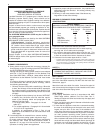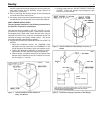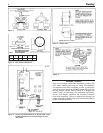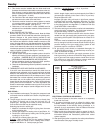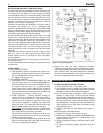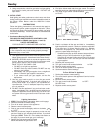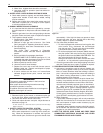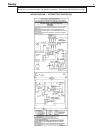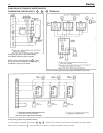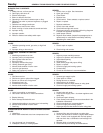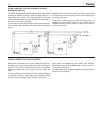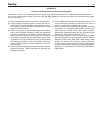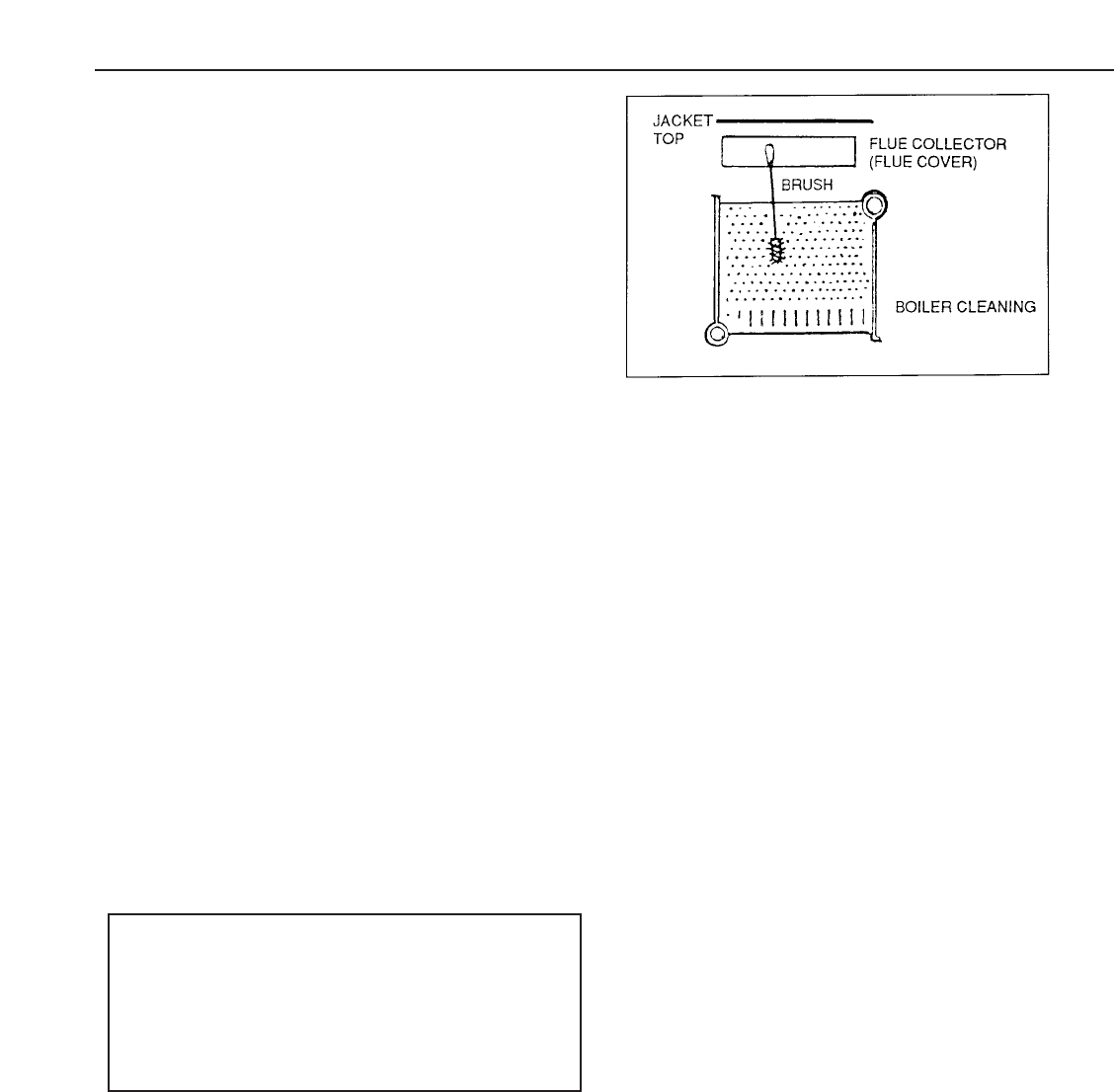
3. Water lines: slightest leaks should be corrected.
4. Low water cutoff, for operation (see instructions fur-
nished with unit).
2
. WATER LEVEL CHECK DURING HEATING SEASON
A. Check water pressure regularly and add water slowly to
system when needed. If much water is added, venting
may be necessary.
B
. Regular loss of water from water boiler system may indi-
c
ate either a system leak, or a faulty air control system,
or a faulty automatic fill valve.
3. ANNUAL INSPECTION AND CLEANING
A. It is important that this boiler be inspected by a compe-
tent serviceperson to help insure safe and reliable oper-
ation.
B. Check for gas leaks from valve and gas piping to burners
and pilot. If leaks are found, repair or replace as required.
C. This inspection should include:
1. Controls check. See “Safety Check for Control
System” (No. 4) below.
2. Recheck of input gas rate to burners. See "Initial
Start" paragraph in "Operating instructions" section.
3. Re-adjusting for best flame characteristics of main
flame and pilot(s).
See "Initial Start" paragraph in "Operating
Instructions" section and see "Burner Adjustment"
section.
4. Burner and boiler flue passage cleanliness:
BURNER AND FLUE CLEANING (see figure 17). It is
suggested that paper be placed on burners to collect
any foreign material when cleaning flues.
5. Remove jacket top and flue cover.
6. Use wire brush to clean flueways.
7. Replace flue cover and re-seal with furnace cement.
Replace jacket top. Remove and dispose of paper
and accumulated material.
8. If burner surfaces are not clean, or if uneven flame
indicates plugged burner ports, remove and clean
burners.
NOTE-TO REMOVE BURNERS:
1. Disconnect pilot at pilot mount, or disconnect pilot gas
line at gas valve, before removing burners next to pilot.
2.
Lift burner and remove burner from orifice.
3. Clean and replace burners* and pilot. Adjust burners as
described on page 10.
*To clean burners run a clean flue brush up the tube until all foreign
matter is removed.
4. SAFETY CHECK FOR CONTROL SYSTEM
A. High limit control test: Set thermostat high enough for
boiler water temperature to reach high limit control set-
ting. When this temperature is reached, the high limit
switch should open, and the main gas valve should close
automatically. If the high limit does not operate to close
the main gas valve, the valve, the high limit or the wiring
is faulty. Repair or replace immediately.
B. Gas valve safety shutdown test:
1. For boiler equipped with continuous burning pilot, with
main burners firing, disconnect the thermocouple
from the gas valve. The gas valve should immediate-
ly shut off the main burners and the pilot.
2. For boilers equipped with Honeywell S8600 intermit-
tent pilot system, with main burners firing, disconnect
the ignition cable from the S8600 IGNITOR BOX. The
gas valve should shut off the main burners.
If the gas valve fails to shut down main burners when
the test in 1 or 2 is performed, replace the gas valve.
C. Check for gas leaks from valve and gas piping to burners
and pilot. If leaks are found, repair or replace as required.
5. PROVIDING PROTECTION FROM FREEZING
A. Anti-freeze is sometimes used in hydronic heating sys-
tems to protect against freeze-up in the event of power
failure or control shutdown when the building is unoccu-
pied. It should be recognized that unless the building is
kept above freezing temperature by some means, the
plumbing system is not protected.
PROPYLENE GLYCOL is used in the quick-freeze food
industry; it is practically non-toxic. Its use may be permit-
ted when tankless heaters are used. When anti-freeze
must be used, inhibited propylene glycol is recommend-
ed. Useful information on the characteristics, mixing
proportions, etc. of glycol in heating systems is given in
Technical Topics No. 2A, available from the Hydronics
Institute 34 Russo Place, Berkeley Heights, NJ 07922.
Consult glycol manufacturers for sources of propylene
glycol. DO NOT use ethylene glycol because it is toxic.
B. Water Treatment:
A good water treatment program will not only extend the
useful life of this boiler but it will also save much of the
time and expense of repairs made necessary by pre-
ventable occurrences.
A reputable water treatment company should be consult-
ed to evaluate and determine the best overall treatment
program for your boiler equipment.
6. KEEP THE BOILER AREA CLEAR AND FREE FROM
COMBUSTIBLE MATERIALS, GASOLINE, AND OTHER
FLAMMABLE VAPORS AND LIQUIDS.
Figure 17.
12
Sentr y
WARNING:
The ceramic combustion chamber in the burner box
contains crystalline silica.
Wear proper dust mask and gloves when servicing
combustion chamber or burners.
Crystalline Silica has been identified as a carcinogen or
possibly carcinogenic to humans.



